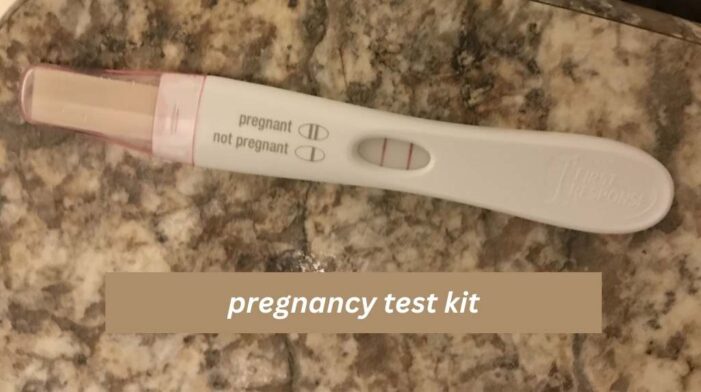
Everything You Need to Know About Using a Pregnancy Test Kit
Are you eagerly awaiting the possibility of a little bundle of joy? The anticipation and excitement that comes with taking a pregnancy test can be both exhilarating and nerve-wracking. Understanding how to correctly use a pregnancy test kit is crucial for accurate results. This comprehensive guide will walk you through everything you need to use a home pregnancy test kit. From types of tests to tips for accuracy, we’ve got you covered! Let’s dive in and unravel the mysteries behind those two telling lines on your pregnancy test.
Contents
Understanding Pregnancy Tests
Pregnancy tests detect the hormone hCG in urine produced during pregnancy. When a woman becomes pregnant, her body starts releasing hCG, signaling the beginning of a new chapter. Home pregnancy tests are designed to detect this hormone and provide results within minutes.
It’s important to note that not all pregnancy tests are created equal. Some are more sensitive than others and can detect lower levels of hCG earlier in the pregnancy. Understanding the sensitivity level of your test can help you determine when to take it for accurate results.
Most home pregnancy tests come with instructions on how to use them properly. Following these instructions carefully will ensure that you get reliable results. Remember that while home pregnancy tests are convenient and easy to use, they may not always be 100% accurate. If you have doubts about your result, it’s best to consult a healthcare provider for further guidance and support.
Types of Pregnancy Tests
There are two main types of pregnancy tests: urine-based tests and blood tests. Urine-based tests are the most commonly used at-home pregnancy kits. These kits detect the presence of human chorionic gonadotropin (hCG) hormone in your urine, produced during pregnancy.
On the other hand, blood tests can be done at a healthcare provider’s office. There are two types of blood tests: a qualitative hCG test that simply confirms whether hCG is present or not, and a quantitative hCG test that measures the exact amount of this hormone in your blood.
Both tests can provide accurate results, but blood tests are more sensitive and detect pregnancy earlier than urine-based home kits. When confirming a pregnancy, it’s important to choose the type of test that suits your needs and preferences.
How to Use a Home Pregnancy Test Kit
Using a home pregnancy test kit is straightforward and can provide quick and reliable results in the comfort of your home. To begin, carefully read the instructions included in the kit to ensure you understand how to use it properly.
Start by collecting a urine sample in a clean container. Most kits recommend using first-morning urine for the most accurate results, as it contains higher levels of the pregnancy hormone hCG.
Next, dip the testing stick into the urine sample according to the instructions provided, ensuring that it does not exceed the marked line on the stick. Alternatively, some kits may require placing a few drops of urine onto a testing strip.
After waiting for the specified time indicated in the instructions (usually around 3-5 minutes), check for any visible lines or symbols on the test window. A positive result typically shows up as two lines or a plus sign, while a negative result is usually indicated by one line or minus sign.
Remember that each brand of pregnancy test kit may have slightly different guidelines, so always follow their specific directions closely for accurate results.
Tips for Accurate Results
To ensure accurate results when using a pregnancy test kit, it’s essential to follow the instructions carefully. Start by checking the kit’s expiration date and ensure it is sealed and not damaged.
Use your first-morning urine, which contains the highest hCG hormone levels, for the most reliable results. Avoid excessive fluid intake before testing, as it can dilute your urine and potentially affect the accuracy of the result.
When taking the test, read and wait for the recommended time indicated in the instructions. Take your time and check, as this could lead to false negatives or positives.
If you need clarification on interpreting the results, consider taking a second test or consulting a healthcare professional for further guidance. Remember that even faint lines on a pregnancy test can indicate a positive outcome.
Following these tips can increase the likelihood of obtaining accurate results when using a pregnancy test kit.
When to Take a Pregnancy Test
Timing is crucial when it comes to taking a pregnancy test. Most tests claim to detect the hormone hCG in your urine produced during pregnancy. For accurate results, you wait until you’ve missed your period before testing is recommended. However, some sensitive tests can detect hCG levels earlier.
If you’re anxious and can’t wait until after your missed period, there are early detection tests available that can be taken a few days before your expected period. Keep in mind that testing too early may result in a false negative due to low hCG levels.
On the other hand, if you suspect you might be pregnant but receive a negative result, consider retesting after a week or consulting with a healthcare provider for further guidance. Remember that every woman’s body is different, so listen to yours and choose the right timing.
What to Do If the Result is Positive/Negative
Discovering the results of a pregnancy test can evoke a mix of emotions, whether it’s positive or negative if the result is cheerful. Congratulations! It’s time to schedule an appointment with your healthcare provider to confirm the pregnancy and start prenatal care. They will guide you through the following steps and provide valuable information on maintaining a healthy pregnancy.
On the other hand, if the result is negative, remember that false negatives are possible if testing is done too early. Give yourself some time before retesting or consult with your healthcare provider for further advice. It’s essential to take care of your emotional well-being during this moment and seek support from loved ones or professionals if needed.
Regardless of the outcome, always prioritize self-care and seek guidance when necessary. Your health and well-being are paramount in understanding your pregnancy status.
Common Mistakes When Using Pregnancy Tests
When using pregnancy tests, some common mistakes can affect the accuracy of the results. One common error is not following the instructions properly. It’s crucial to read and follow the directions carefully to ensure you get reliable results.
Another mistake is testing too early. Pregnancy tests work by detecting a hormone called hCG in your urine, which increases as pregnancy progresses. Testing too soon after conception may result in a false negative result.
Using an expired or damaged test kit can also lead to inaccurate results. Always check the expiration date and ensure the packaging is intact before using a pregnancy test.
Additionally, drinking excessive fluids before taking a pregnancy test can dilute your urine sample, potentially affecting the results. It’s best to use first-morning urine for optimal accuracy.
Misinterpreting faint lines or evaporation lines on a test strip can confuse. To ensure an accurate interpretation of your pregnancy test outcome, read the results within the recommended time frame specified in the instructions.
Alternatives to Home Pregnancy Tests
There are a few options if you’re looking for alternatives to traditional home pregnancy tests. One alternative is visiting a healthcare provider for a blood test, which can detect pregnancy earlier than urine tests. Another option is using an online telehealth service, where you can consult with medical professionals and receive guidance on testing options.
Additionally, some women opt for natural methods like monitoring basal body temperature or observing changes in cervical mucus to track ovulation and potential conception. While these methods may not provide immediate results as a home pregnancy test kit, they offer insight into fertility patterns over time.
Remember, choosing the method that best suits your needs and comfort level when determining if you’re pregnant is essential. Consulting with healthcare providers can help you explore different alternatives and make informed decisions about your reproductive health.
Conclusion
Understanding how to correctly use a pregnancy test kit is crucial for accurate results. Whether you hope for a positive or negative outcome, following the instructions carefully and taking the test at the right time can make all the difference. Remember that home pregnancy tests are generally reliable when used correctly, but it’s always best to confirm any result with a healthcare provider. If you suspect you may be pregnant or have concerns about your results, don’t hesitate to seek professional medical advice. Stay informed and empowered throughout your journey towards motherhood with the proper use of a pregnancy test kit.
Read More……..
White discharge during pregnancy
Morning Sickness in Early Pregnancy: Nausea During Pregnancy




